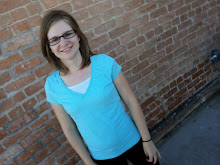- Number of healthy fish (not green): 37
- Number of sick fish (green): 10
- Total number of fish: 47
- Compute the probability that a fish in your sample is healthy. 34/47
- Compute the probability that a fish in your sample is sick. 10/47
- Add together the probability of getting a sick fish plus the probability of getting a healthy fish. 1
- Compute the probability of not getting a healthy fish. 10/47
- Compute the probability of not getting a sick fish. 37/47
A park ranger estimates there are a total of three hundred fish in his pond. Using our numbers...
- Estimate the number of healthy fish in the pond. 237
- Estimate the number of sick fish in the pond. 63
If I wanted to catch and eat a fish out of the pond, how many fish must I catch to guarantee (100%) that I would catch at least 1 healthy fish? 64 fish
So what was the point of this activity? To be introduced into probability with a hands-on concept. As our first activity and lesson in the class, I really enjoyed it, even though I hate probability.
When I first thought of probability, I thought of it mathematically looking like this (37:47)
That example, however, is how odds are written. I might explain that in a later post. For now, I want to tell you what we learned.
We talked about probability. What does that mean? There are two different types of probability: experimental and theoretical. Experimental probability is what we did: we experimented with the outcomes and possible events. Theoretical probability is, in theory, how the outcome will turn out under ideal conditions.
According to Bernoulli's Theorem, the more times an experiment is repeated, the closer the experimental probability comes to reaching the theoretical probability. That is why when doing an experiment, it is best to use large numbers or repeat the event many times to get the best results.
Well that's a wrap. It was brief and not very in depth, but if you look over our results from the fish activity then you should be able to put all of the pieces together.
Check this out!
So what was the point of this activity? To be introduced into probability with a hands-on concept. As our first activity and lesson in the class, I really enjoyed it, even though I hate probability.
When I first thought of probability, I thought of it mathematically looking like this (37:47)
That example, however, is how odds are written. I might explain that in a later post. For now, I want to tell you what we learned.
We talked about probability. What does that mean? There are two different types of probability: experimental and theoretical. Experimental probability is what we did: we experimented with the outcomes and possible events. Theoretical probability is, in theory, how the outcome will turn out under ideal conditions.
According to Bernoulli's Theorem, the more times an experiment is repeated, the closer the experimental probability comes to reaching the theoretical probability. That is why when doing an experiment, it is best to use large numbers or repeat the event many times to get the best results.
Well that's a wrap. It was brief and not very in depth, but if you look over our results from the fish activity then you should be able to put all of the pieces together.
Check this out!


No comments:
Post a Comment